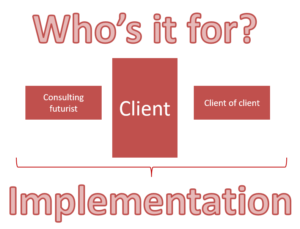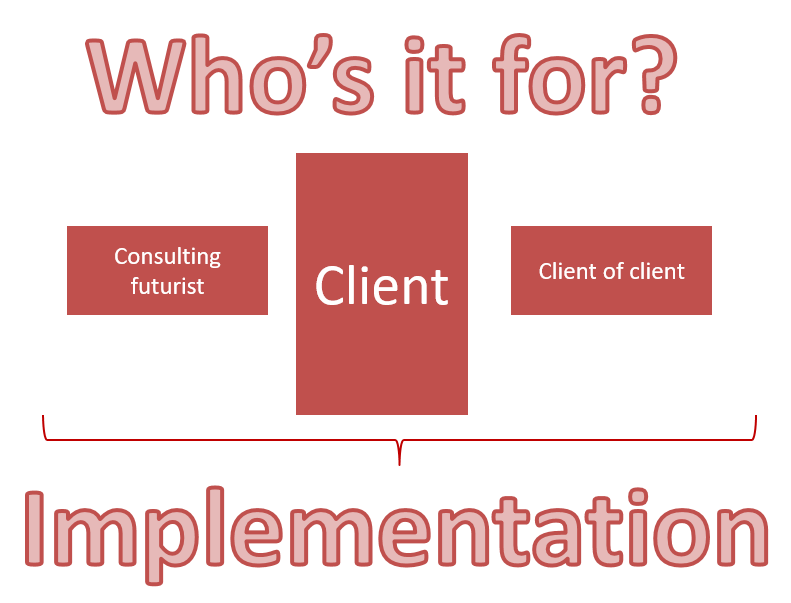Short answer: it’s you, not them. “You” is the person/group who h ired the futurist. We are typically hired by futures-oriented thinkers to help them do futures work for their organization. This futures-oriented client (direct client) will often tell us the work is for so-and-so internally or for the organization (client-of-client). And together we strategize on how to best please so-and-so or the organization.
ired the futurist. We are typically hired by futures-oriented thinkers to help them do futures work for their organization. This futures-oriented client (direct client) will often tell us the work is for so-and-so internally or for the organization (client-of-client). And together we strategize on how to best please so-and-so or the organization.
My sense is that this is backwards. The direct client who hired us surely does have to please some sort of sponsor, but really they ought to be seeking a blessing to lead or do the implementation work themselves. So few people in most organizations know what to do with futures work that expecting to hand it off to anyone is project suicide. So in essence the direct client really is the client, and they just need permission from the client-of-the-client to do what is needed.
For example, a client thinks their organization needs to adopt blockchain technology. They hire us to help them persuade busy leader(s) that they need to adopt blockchain technology. Busy leader says “thanks…. and very interesting,” throws it onto the pile of things to do, and goes back to being busy. Or something like this: we do a strategy study for a client who is a mid-level person/group aiming at the Board and expecting the Board to do something with the study. They may read it, but rarely will they take initiative to mobilize people and do something with it on their own.
Too many times we and our clients are leaving the implementation responsibility with someone else. As consultants giving advice, we bear some responsibility here. It should be more like this: Hello Board, here is what we propose to do – may we have your blessing to go do it?
Perhaps we should be more attentive to designing projects for our client that they can lead or implement. Or here’s the bomb, perhaps so we futurists can help implement ourselves (that’s a topic for another post) – Andy Hines

Leave a Reply